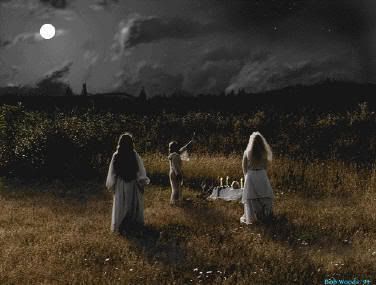 Since when is it the job of a religion to convert members of another religion... as a matter of organizational policy!? Every religion has the right to recruit members from society at large, but the Vatican is now opening up old wounds by literally targeting a religious demographic that they used to simply murder off.
Since when is it the job of a religion to convert members of another religion... as a matter of organizational policy!? Every religion has the right to recruit members from society at large, but the Vatican is now opening up old wounds by literally targeting a religious demographic that they used to simply murder off.
The Vatican doesn't seem the least bit concerned with tens of millions of Muslims migrating into Europe with no end in sight; not to mention the fact that Catholicism, and Christianity at large, has become a comparatively weak social construct in the UK in particular. Apparently, they're too preoccupied with a very small number of practitioners of native paganism, or what they refer to as "witchcraft." Apparently "priestcraft" is okay. If this action was targeting one the larger religions, then people would call it "hate," but if it's a smaller relgion, then it's okay under the current paradigm.
The Vatican is a sovereign state which oversees the worldwide Catholic Church; as well as a massive, MASSIVE, global banking conglomerate. Why are they concerned with a few people chanting in a forest clearing, who aren't even bothering anyone? Now when we add in the factor of the Vatican's historic systematic murder of any religion which wasn't Catholic (Waldensians, Cathars, Pagans, etc.), this action by the Vatican is nothing short of crazy. If there were pagans somewhere, antagonizing Christians, then that would merit a similar response; but lets face it, what we have here is an ant versus an elephant.
The Camonica Club of North America, descendants of the Val Camonica witch trials brought upon by the Vatican in the sixteenth century, condemns the Vatican's pamphlet entitled 'Wicca and Witchcraft: Understanding the Dangers', and calls for them to simply leave these peaceful people alone. Whatever fault could be found among an absolutely minuscule number of pagans is a drop in the bucket compared to the very serious problems of a much larger number of trusted Catholic officials worldwide in recent years; not to mention the Vatican's terribly destructive proxy actions in Croatia not so many years ago.
Catholic Church Issues Guide on How to Convert Witches
Theunis Bates - AolNews - February 4, 2011
LONDON -- Five hundred years ago, the Catholic Church had a simple way of dealing with witches: It burned them alive. The Vatican still views these broom botherers as a danger, but is now calling on Catholics to eliminate the neo-pagan problem in a more moderate manner.
According to a new booklet from the Catholic Truth Society -- the U.K. publishers for the Holy See -- the faithful can convert Wiccans by following a few simple steps. The pamphlet, titled "Wicca and Witchcraft: Understanding the Dangers," suggests that Catholics spark up conversations with these unbelievers about shared concerns such as the environment, The Telegraph reports.
And if you bump into a witch in a bar or coffee shop, the book adds, it's important to recognize that "Wiccans are on a genuine spiritual quest," providing "the starting point for dialog that may lead to their conversion."
The booklet's author, former Wiccan Elizabeth Dodd, states that nearly 70 percent of people indulging in witchcraft are young women seeking some kind of spirituality, according to the Daily Mail. The source of that statistic isn't clear, but some 7,000 Brits identified themselves as Wiccans in the 2001 census.
So why does the Vatican once again feel that it needs to confront pagan practitioners? The Daily Mail says that the church is afraid the dark arts are becoming ever more tempting thanks to the success of Harry Potter. Dodd says that any youngster who dabbles in magic risks long-term problems.
"Whether spellwork is effective or not," writes Dodd, according to The Telegraph, "has no bearing on the psychological damage that can be done to a young person who is convinced that they have summoned the dead, or have performed a spell that has hurt or injured another."
More important, Dodd adds that the simple act of experimenting with spellcraft is an insult to the Almighty. "The use of magic, the practice of witchcraft, offends God because it is rooted in our sinful and fallen nature," she writes. "It attempts to usurp God."
While many religious and nonreligious folk might regard Dodd's message as extreme, her point has clearly been heeded by some Catholics. As of this morning, the pamphlet was listed as sold-out on Amazon.co.uk.
.




